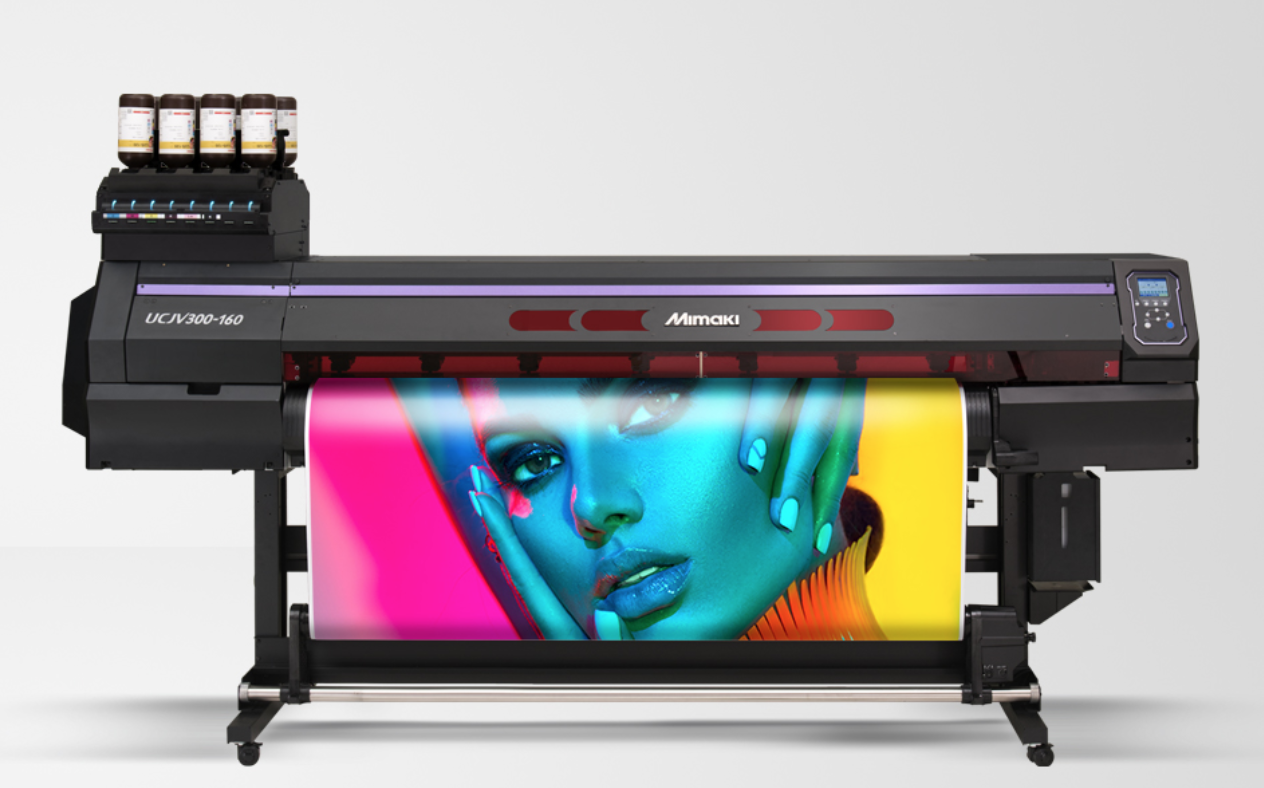The advent of white ink printing is one of the best things to happen to the digital printing industry in recent years. White ink printing has opened up endless opportunities and helped reduce the costs involved in a variety of printing processes.
However, before we dive into the benefits of using a white ink printer, let’s cover the basics first.

Until recently, using white ink in digital printing was impossible. That’s because the entire spectrum of printed colors comprises cyan, magenta, yellow, and black (CMYK), and no printing technology was capable of producing white ink. To understand white ink printing, we must first compare it to CMYK-only printing. CMYK colors are transparent, a property that allows them to mix and produce other colors in the color spectrum. Unfortunately, when it comes to offset printing, these colors are incapable of covering dark surfaces. As a result, printing in white was impossible.
When white ink printers came along, they revolutionized the digital printing industry. White ink is opaque, meaning it doesn’t allow light to pass through. This enables printers to use white ink on any surface. White ink printing, through layering, also helps create prints that are simultaneously transparent and opaque.
There are two main methods for white printing on dark surfaces, namely:
With white printing, you can take your creative business to the next level, as you’ll be able to meet your customers’ expectations easily and cost-effectively.
If you’re wondering why you even need to use a white ink printer, we’ll give you a few reasons.
Used as an underlay, white ink makes the colors printed on top of it pop and stand out. It adds vibrancy to your colors, resulting in prints that are appealing to the eye. As a business, attention-grabbing prints are essential, as they make your prints stand out in a crowd of other marketing materials.
One of the primary reasons to use a white ink printer is that it enables you to print on more types of surfaces. It also makes it possible to print on other colored papers where white normally wouldn’t appear.
When white ink printing first became available, everyone in the digital printing industry knew a new era had dawned. That’s because white ink printers make previously challenging—and, at times, impossible—projects easy. It also meant a reduction in the expenses incurred by other projects.
One of the benefits of printing with white ink is that it makes it easier to print light colors on dark-colored substrates. With CMYK, printing white on dark paper is impossible. For example, if a client asks for white text on black cardstock, you’ll have to jump through hoops to deliver. You may have to use a silk screening process to help them achieve the design they want. Other alternatives include a vinyl transfer or even stamping the text.
Because it simplifies the processes required to print designs successfully, white ink printing helps reduce your printing costs. This is because you can simply use underlaying (as a base) or overlaying (for reverse printing) techniques with white ink. Doing so means cutting down on extra materials needed to achieve the desired results when white ink is not an option.
CMYK printing is limited in terms of what you can do with it. Thankfully, with the introduction of white ink, you can expand what you can communicate through print. For example, white printing allows for more complex print designs and the use of surfaces that were once difficult to use—all without burning a hole in your budget.

If white ink printing is something you’d like to try but you are not sure how, here are a few ways to help you get started:
A clever way to be creative with white ink printing is to use white ink with subtle contrasts. The difference in sheen between the stock and the white ink produces a varnishing effect that makes the outcome look like a watermark.
Another way to be creative with white ink is to create layered dimensions. You can achieve this by shifting opacities. Without going into too many technical details, you can control opacity by varying the number of times a sheet is hit with white ink. The more printing passes with white ink you make, the more opaque the white value appears; the fewer the passes, the more transparent. The opacity between layers and colors results in fantastic depth.
If printing with white ink sounds like something you’re interested in, you need to invest in a white ink printer. One of the best white ink printers on the market, if we may say so ourselves, is the Mimaki UCJV300 Series.
The UCJV300 Series is a family of revolutionary print-and-cut machines. The series offers in-line cutting capabilities and features multi-layer printing for transitional or double-facing images. Other notable features of this white printer series include:
No matter the substrate, you can use any white ink printer in this series to create different types of graphic applications that will meet—and exceed—your customers’ needs.
If you need a white ink printer, give us a call at 888-530-3988. We’ll be glad to help you pick the right one. Alternatively, you can reach out to us electronically, and we’ll get back to you.